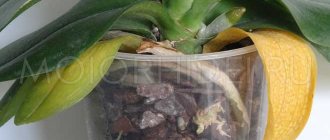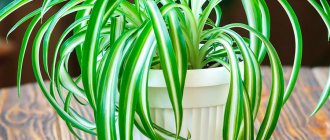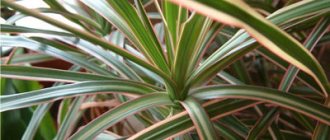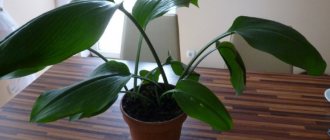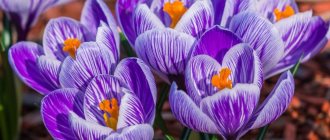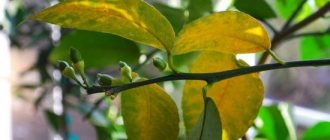Why do spathiphyllum leaves turn dark?
Dry air or low humidity levels
Spathiphyllum tolerates dry indoor air very painfully. Under such conditions, the tips of the leaves begin to dry out and gradually change color to dark. The appearance of the plant gives a signal that urgent moisture is needed in the form of spraying from a spray bottle. A tropical plant indoors requires a moderately humid environment.
It is important to take into account the air temperature in the room during such “water procedures”. In cool conditions, over-spraying can cause the plant's roots to die.
Lack of fertilizers and nutrients in the soil
Blackened tips of spathiphyllum leaves can signal a lack of nutrition and fertilizing. The required quality and quantity of fertilizers will help solve this problem. In the period from March to September, the houseplant is fed three to four times a month, and in the remaining months (and especially during the dormant period) once every thirty days will be enough. The fertilizer must contain all the necessary nutrients for flowering indoor plants.
Excess fertilizer
A large number of fertilizers and their frequent application to the soil, as well as an excess of certain nutrients will only bring a negative result. When dry tips appear on the leaves, the frequency of fertilizing should be reduced and the composition of the fertilizer should be reviewed. Excess minerals, for example, harm a houseplant and spoil its external characteristics. As a life-saving measure, it is necessary to urgently rid the flower of all damaged leaves, and temporarily suspend the application of fertilizing. The indoor flower will gradually recover.
The quality of irrigation water and its volumes during irrigation
Water for watering spathiphyllum should only be used at room temperature and must be settled. Not only the condition of the leaves, but also the full development of the entire indoor flower depends on the softness of the water.
The volume of irrigation water is also of great importance. An excess of water leads to stagnation in the soil and rotting of the roots. It is recommended to water the plant again only after the top layer of soil has completely dried. 1.5-2 hours after watering the plant, it is necessary to drain excess water from the flower tray.
Lack or excess of sunlight and choice of growing location
An unfavorable effect on the plant, and ultimately blackening of the leaves, is caused by the wrong choice of place to place the indoor flower. The optimal place for spathiphyllum is a window sill on any side of the house except the north. Direct sunlight and poor lighting adversely affect the decorative qualities of a pet. It is necessary to protect it from sunburn, and in the autumn-winter period use additional lighting with fluorescent lamps.
Insufficient number of “water procedures”
The foliage receives the necessary amount of moisture with regular and abundant spraying in the warm summer months, and especially in hot weather. From such weekly bathing, the “female happiness” flower will look healthy and attractive.
Lighting and temperature for chlorophytum
Chlorophytum feels great in any light. It is important to remember that direct light dries out the soil and leads to pale leaves, but if you place the plant in the shade, this will lead to fading of the leaves. Due to poor lighting, the leaves of chlorophytum begin to break.
It is best to place the plant in the sun for 3-4 hours a day, and then put it in the shade. When choosing a temperature, the main thing is to avoid overcooling the plant. The temperature should not be below 10°C. Constant heat will also have a bad effect on the condition of chlorophytum. The optimal temperature for this plant is + 18°C.
Pests
Chlorophytum is rarely attacked by pests, but such a situation is not excluded. It is better to know the enemy by sight in order to save your flower from death in time. Most often, the plant is damaged by scale insects, spider mites and thrips.
Shield. The waxy body of this insect firmly adheres to the inside of the leaves and drinks cell sap. As a result, the plant turns yellow, withers, and its leaves fall off.
To destroy the pest, the leaf plates are first wiped with a sponge soaked in a concentrated solution of ordinary laundry soap, after which the flower is treated with any insecticidal solution.
Spider mite. The appearance of this parasite is caused by excessively dry air in the room. Signs of damage are cobwebs on the stems and leaves of the flower, along which the mite moves.
The insect feeds on cell sap, the leaf blades quickly wither, lose color, and fall off. An insecticidal solution will help in the fight against ticks. It is recommended to repeat spraying after 4-5 days to completely eliminate the pest.
IMPORTANT! Spider mites are one of the most dangerous insects. Reproducing at enormous speed, it can completely destroy the plant in a very short time.
Thrips.
Small insect. It usually affects the inner surface of leaves, eating away their pulp. White spots first appear on the surface of the leaf plates, which dry out over time, turn brown, and subsequently holes form in their place. Thrips are destroyed by spraying the flower with any insecticidal solution.
It is enough to give your green pet a little caring attention, and you will never have to face the problems described in this article.
Description of the plant
Chlorophytum is a perennial herbaceous plant of the Asparagus family, discovered in 1794 in the tropical zones of South America, and a little later in Africa.
In nature it is represented by more than two hundred species. The root system consists of long shoots that very quickly grow into the ground or into the bark of trees. At the same time, the plant also produces aerial roots.
The foliage grows directly from the rhizome. Its shape is linear, feathery, and its color is rich green. The length of the leaf depends on the species. There are miniature plants with leaf blades of 15-20 centimeters, and there are varieties with long leaves, more than half a meter. The maximum height of the bush is 80 centimeters, while in width the plant can occupy an area of one and a half to two meters, forming a small mound with its roots.
Chlorophytums bloom 1-2 times a year. The flowering is lush. The buds are collected in bouquets and open with miniature white flowers in the shape of stars. At the flowering site, aerial roots and elongated fruit seed pods are formed.
Chlorophytums have an amazing property - they absorb all harmful substances in the air: formaldehyde, carbon dioxide, tobacco smoke, ammonia and others. Moreover, the more toxic elements in the air, the more intense the plant’s growth.
In addition, chlorophytum kills bacteria and fungal spores within a range of 5-6 meters around itself.
Another useful quality of chlorophytum is its undemandingness to soil. Its roots are able to adapt to any conditions and due to this feature it can be grown anywhere, creating any interior forms for landscaping rooms and landscapes.
The roots are rotting
Due to excess moisture and very heavy soil, the roots may begin to die. Most often the phenomenon is noticeable in winter. The appearance of rot on the roots becomes noticeable only after it begins to develop on the above-ground part. The leaves begin to turn yellow and become covered with spots, as a result they completely turn black and rot.
The condition is detrimental to the plant, so it is necessary to take immediate action. An infected bush will die immediately if left untreated. The situation can only be corrected by cuttings. The bush itself cannot be saved completely.
The trunk has wrinkled
Such a phenomenon as a drying out trunk is very dangerous. Chlorophytum may die completely. Pest infestation does not cause such symptoms. The trunk usually begins to wrinkle due to lack of moisture or lighting. It is recommended to replant chlorophytum in softer soil that absorbs moisture better, as well as regular spraying.
Rot on the stem
Not only the roots of the plant can turn black, but also its stems. If dark spots are found on the leaves, this may indicate a violation of the watering rules
It is important to reduce the volume of water in winter. It is necessary to give the plant a rest and water only when the soil is completely dry.
Important! If you properly care for the plant in winter, then in spring it will delight you with beautiful flowering. Stems rot due to improper watering
Stems rot due to improper watering
When wondering why chlorophytum does not shoot arrows, does not grow, and black spots form on the leaves, you need to check whether the plant is infected with pests. Diseases and pests of chlorophytum are rare, but it is necessary to know about them in order to take action in time, since the affected plant can quickly turn yellow and dry out.
The most dangerous for the flower:
- thrips;
- spider mite;
- scale insect
Insects can be detected if you carefully examine the ground part. It is the external signs that help determine which pest attacked the flower. After this, you can decide on control measures.
Important! You need to look for ways to deal with pests as early as possible, before they actively breed. If there are a lot of them, insects can completely destroy chlorophytum
The type of pest can be determined by the following characteristics:
- A gray coating in the form of cotton wool appeared - a mealybug.
- Dryness and yellow spots indicate that thrips have appeared.
- Leaves become curled and distorted due to aphid infestation.
- If a flower is attacked by a scale insect, you can see pale leaves with dark spots.
Infestation of a flower with scale insects is easy to detect
To destroy scale insects yourself at home, you must first wipe the leaves with a sponge soaked in a solution of water and laundry soap. After this, you can treat with any anti-parasite agent.
One of the most dangerous pests is the spider mite. It appears due to too dry air. The mite feeds on cell sap, which causes the leaves to wither. To get rid of the pest, it is necessary to spray 4-5 times a day with an insecticidal solution.
Chlorophytum requires enhanced care at home. If the leaves turn yellow, you can find out what to do by determining the cause. Compliance with the maintenance rules will help you grow a beautiful flower that will delight you with its blooming.
Chlorophytum transplant
At home, caring for chlorophytum is not burdensome, but spring transplants are an integral part of caring activities. A loose and fertile substrate is required, consisting of leaf and turf soil, humus and sand (2*2*1*1).
Each time the plant is transplanted into a slightly larger container, since it blooms more luxuriously in a cramped (but not critically cramped!) container. The best material for a chlorophytum pot is ceramic. The transplant is carried out in February-March, preceding the start of the active period.
Before transplanting, chlorophytum is watered abundantly, and then transferred with a lump of earth into a new container, filled to a quarter of the height with drainage. Then fresh soil is added, compacted, and the plant is watered again. The container is placed in the shade for several days, and then the flower is placed in a permanent place.
Root rot - causes of blackening of leaves
The rhizome of chlorophytum may suffer due to excess moisture and heavy soil. The plant often suffers in winter under the influence of cold air and dampness. A decrease in ambient temperature implies a decrease in humidity.
The appearance of root rot is invisible at first, but later the symptoms affect the above-ground part. The leaves first turn yellow, become covered with spots, and may completely turn black and rot. Measures should be taken immediately, since the condition is dangerous for indoor plants. A bush infected with diseases can quickly die. For this reason, yellowing in winter requires urgent treatment.
Fertilizers and fertilizing for chlorophytum
Chlorophytum grows intensively from March to September; its dormant period is pronounced and occurs in winter, when the plant goes into hibernation. Therefore, it is better to start watering with fertilizers with the arrival of spring, adding mineral or organic fertilizers to the water. All about organic fertilizers. By the way, when it reaches adulthood, it blooms, producing stems with small white flowers at the ends! Therefore, during flowering, you can use fertilizer for flowering crops.
Chlorophytum is considered an unpretentious plant, adapts well to home conditions, has a decorative green mass, actively produces oxygen and purifies the air. The reasons why chlorophytum leaves turn yellow are different. To help an indoor flower, you need to understand the source of the disease.
Leaf tips dry out due to improper watering
Leaves will dry out if watered too much. Excessive watering provokes acidification of the soil, which leads to rotting of the roots. If you continue this process, the flower will die.
The appearance of brown spots along the edges of leaves is called necrosis. With this disease, tissue partially dies. This phenomenon occurs because some of the roots die. For this reason, the flower ceases to receive the substances required for development.
Dry spots on the edge, which appeared due to rotting of the rhizome, are much darker than those spots that are associated with insufficient watering and low air humidity. In the latter case, these will be bright yellow or light stripes.
Excessive watering as a cause of drying out
Necrosis from the edges of the leaves is associated with improper watering. The soil in the pot does not have time to dry out, air does not reach the roots, which is why putrefactive microorganisms begin to multiply. This condition is aggravated by cool air temperatures, as well as the location of the pot in a cold place.
During the warm summer season, many species require abundant watering. However, when it gets cold in autumn and winter, flowers need to be watered less frequently to prevent rotting of the roots and, as a result, drying out.
It can also be a problem if you fertilize too much. Most flowers stop actively growing in autumn and winter, so they need much less additional feeding.
Note! If you continue to fertilize, the soil will become sour and salty, which will greatly damage the roots. In a situation where a flower needs to be watered all year round, it is worth creating warm conditions to prevent the earth from cooling and the presence of drafts
Diseases
Chlorophytum or, as it is also called, “Green Lily” is surprisingly resistant to various diseases, however, some problems may arise when growing it. Moreover, the diseases are the same in all its types:, and.
Leaves are drying
The tips of Chlorophytum's leaves are drying, what should I do?
Why do the leaves dry out?
- Sunburn.
Chlorophytum loves light and feels quite comfortable in a well-lit room. But the light must be diffused. Direct sunlight on the plant can cause burns to the leaf blades, as a result of which they begin to dry out at the edges.Solving this problem is very simple: you need to change the location of the flower so that the sun's rays do not have direct access to it.
- Insufficient watering.
The roots of chlorophytum are fleshy, large and capable of retaining moisture for a long time. But too long a drought can negatively affect the appearance of the plant: it begins to dry out, especially the tips of the leaves. - Low indoor humidity.
Chlorophytum is hot. Usually, the dried ends of the leaves indicate dry air in the room where the flower lives. It is enough to spray the plant more often and its appearance will quickly return to normal. - Natural renewal process.
Chlorophytum has one peculiarity: each of its leaves has a certain life cycle, after which the old leaf plates die off and are replaced with new, young ones. And this process begins with the drying of the tips of the leaves.
Turns yellow
It happens that the leaves of the plant begin to turn yellow, starting from the tips.
Why do the tips of the leaves of chlorophytum turn yellow?
- Lack of light.
This plant loves bright rooms. Usually the flower is placed closer to the windows. If chlorophytum does not have enough light, it immediately begins to lose its green color, its leaves turn yellow and become lethargic. It is advisable to move the flower pot to a more illuminated place. In winter, when natural daylight is not enough, use artificial lighting sources.
- Lack of nutrition.
Chlorophytum needs to be fed throughout the year. In summer, fertilizers are applied frequently, about once a week, in winter less often - once a month. - Cramped pot.
"Green Lily" grows quite quickly, especially with careful care. The root system of this flower is quite powerful, so the next time you replant, you need to take the container about 20-30% larger than the previous one in order to provide the roots with enough space to develop.
If the plant suddenly begins to turn yellow and wither, you need to immediately inspect the pot. Overgrown roots usually deform the walls of the flowerpot, thereby signaling the need for urgent replanting.
Doesn't grow
Has the plant been “in one place” for a long time and does not want to grow? Why does this happen?
- Volumetric pot.
After purchasing, you should not take a large pot for replanting. The roots of the plant should fill the space of the container by 60-70%. Otherwise, chlorophytum will try to grow the root system and occupy the entire volume of the pot. It simply does not have enough strength for the active growth of the upper, above-ground part. - The soil has become impoverished.
The flower requires constant feeding with fertilizers (universal fertilizers for indoor ornamental plants). The nutrient solution should be added according to the instructions indicated on the package. - Dense soil.
The soil should be loose. Expanded clay drainage should be placed in a thick layer at the bottom of the pot.
The tips of the leaves turn black
It happens that dark spots appear on the leaves and the tips turn black.
Why do the tips of the leaves of chlorophytum turn black?
- Excess moisture
. The flower should be watered when the top layer of soil dries. More abundant in summer. In winter - less often.When combining abundant watering in the cold season with low indoor air temperatures, rotting of the root system can occur, which can be immediately understood by the blackening ends of the leaf blades. The flower should be replanted immediately, after removing the rotten roots.
IMPORTANT!
It is advisable not to add chlorophytum rather than to overfill it.
Excessive moisture can destroy the plant completely
. - Excess fertilizer.
An excess of nutrients in the soil also harms chlorophytum, as does a deficiency. When feeding the plant, you should strictly adhere to the specific schedule for applying fertilizer, which is indicated on the package.
Problems from improper care
- drying out of the soil and low air humidity causes drying out
. They begin to dry out at the same time, although such symptoms are not dangerous for the plant. Take care of increasing the humidity level: spray with settled warm water and place a container with peat or wet sphagnum moss near the pot; - Overmoistening of the soil provokes the formation of a large number of leaves and children affected by various types of spotting
. The leaves become covered with brown spots and look painful. To eliminate the problem, reduce watering; - nutritional deficiency affects the condition of the leaves, they turn pale and lose turgor
. Fertilizers are applied once every two weeks, alternating mineral complexes and organic matter; - Excess fertilizer leads to the fact that the flower begins to “fatten” and is susceptible to disease. When feeding, observe the concentration indicated on the package;
Irregular replanting causes the plant to split the pot. The signal for replanting is the slowing down of flower growth and the protrusion of roots onto the surface of the soil.
.
Therefore, as it grows, a larger pot is selected and the soil is replaced, and replanted at the end of February - beginning of March;
Lack of lighting causes leaves to fall off, so the pot is placed in a sunny place with an air temperature of 22-23°C. In winter they are installed near fluorescent lamps.
Drying of the leaf tips of chlorophytum does not harm vital functions
plants. The danger comes from root rot or thrips. All other omissions in caring for a green pet can be easily eliminated, and then the plant will delight you for many years!
Which is very popular among amateur flower growers. It has gained such popularity due to its ease of care and beautiful appearance. However, flower growers often cannot understand why the tips of the leaves of chlorophytum dry out. Let's look into this issue.
In order for the flower to always remain fresh and healthy, it is necessary to provide it with minimal conditions for growth. Lighting and air humidity deserve special attention.
Illumination. Chlorophytum is a light-loving plant, and will feel quite comfortable in a room with sufficient lighting. However, it is worth considering that it is recommended to provide diffused light for it, otherwise direct sunlight, affecting the chlorophytum, will lead to sunburn, as a result of which the leaves will begin to dry at the edges. The problem can be resolved quite easily - you need to place the plant in a place where it is not exposed to sunlight.
Important! Insufficient lighting levels can also cause the flower to turn yellow. If you do not have the opportunity to place it in a room with natural light, arrange artificial light sources for the chlorophytum. Humidity. This indicator has a strong influence on the appearance. Chlorophytum does not tolerate extreme heat, so an environment with low humidity is not suitable for it.
If the air in the apartment is dry, the tips of the plant also begin to dry out. To prevent this, the flower is regularly sprayed. If the leaves have already dried out, spraying water will help restore their former beauty.
Humidity. This indicator has a strong influence on the appearance. Chlorophytum does not tolerate extreme heat, so an environment with low humidity is not suitable for it. If the air in the apartment is dry, the tips of the plant also begin to dry out. To prevent this, the flower is regularly sprayed. If the leaves have already dried out, spraying water will help restore their former beauty.
Soil composition
Chlorophytum prefers loose soil made from turf, leaf soil, sand and In a situation where chlorophytum dries out, you need to decide what to do as soon as possible. Quite often, too much sodium in the soil causes the leaves to dry out and turn brown. If the reason is hidden in sodium, it is necessary to stop using the flower with this component. After some time, the flower will regain its previous appearance.
Important!
Excess moisture in the soil can cause roots to rot and leaves to turn yellow.
Often the tips of the leaves dry out and turn black due to overdrying in the summer and low humidity. To ensure that the flower grows intensively and remains healthy and beautiful, you can consult a specialized store about what soil is best suited for this plant.
Chlorophytum is the most common flower among gardeners because it is easy to care for, does not require special conditions and grows quickly. Also, the plant not only attracts with its aesthetic appearance, but also perfectly purifies the air. But quite often it happens that the tips of the leaves of chlorophytum dry out. What to do in this case?
Root rot - causes of blackening of leaves
The rhizome of chlorophytum may suffer due to excess moisture and heavy soil. The plant often suffers in winter under the influence of cold air and dampness. A decrease in ambient temperature implies a decrease in humidity.
The appearance of root rot is invisible at first, but later the symptoms affect the above-ground part.
The leaves first turn yellow, become covered with spots, and may completely turn black and rot. Measures should be taken immediately, since the condition is dangerous for indoor plants. A bush infected with diseases can quickly die. For this reason, yellowing in winter requires urgent treatment.
Improper plant conditions
In addition to changes in the color of the aerial parts of chlorophytum, other symptoms are often observed. For example, a flower grows poorly due to growing in a small pot and a deficiency of basic nutrients. The tips of the leaves darken with insufficient watering, keeping in a room with dry air, or lack of spraying. In some cases, spots can cover the entire surface of the leaf, which often occurs due to diseases or damage to the root system.
Under what environmental conditions do chlorophytum leaf blades turn yellow:
- lack or excess of water in the ground and air;
- temperature violations;
- prolonged exposure to direct sunlight;
- lack of light;
- nutritional deficiency;
- drafts;
- lack of fresh air;
- infections and insects.
How to save chlorophytum from rotting
If you notice signs of damage to the root system, you must immediately take action. Treatment with chemicals will not have the desired effect if the roots are damaged. For this reason, it is necessary to transplant into a fresh, disinfected soil substrate.
. Usually the procedure for chlorophytum is done by transshipment, but in this case it is necessary to free the rhizome from the ground and cut off all damaged areas, capturing some healthy tissue.
If the root system is completely rotten, it will not be possible to save the bush.
For such plants, cuttings are recommended. In Chlorophytum curly, you can use the children formed on the sides. They take root quickly, so you don’t have to put them in water, but immediately plant them in individual cups. If the rhizome has healthy tissue left, then after pruning, treat it with a solution of a chemical preparation, sprinkle the damaged areas with crushed activated charcoal or charcoal. Plant the chlorophytum in a new pot, after removing the blackened leaves.
How to create ideal living conditions
Despite the sufficient unpretentiousness and vitality of chlorophytum, providing an optimal environment for the home has a beneficial effect on the appearance and immunity of the plant. The culture is thermophilic and develops well with sufficient lighting without direct sunlight. An indoor flower needs systematic watering and moistening of the green mass.
Sudden changes in day and night temperatures and drafts should not be allowed. Regular ventilation of the room is recommended. If chlorophytum does not grow, there may be a lack of nutritional components, the flower pot is too small or large for the rhizome. It is important to consider the time of year and growing season. Thanks to proper care, you can not only achieve preservation of the color of the leaf blades, but also flowering, which is rare for indoor conditions.
When cultivated in an unfavorable environment, the leaves lose the color characteristic of the variety, become stained, rot or dry out at the ends. In most cases, damaged leaf blades will not recover, but eliminating the influence of unfavorable factors and proper care will lead to the chlorophytum growing new green mass.
Chlorophytum readily absorbs tobacco smoke and various toxic compounds (formaldehyde, carbon monoxide) emitted by furniture, floor coverings and plastic panels. At the same time, the appearance of the flower does not suffer at all, because chlorophytum feeds on these harmful emissions and these are undoubtedly plants.
This plant is especially valued for its unique property of purifying and disinfecting the air.
. With proper care, chlorophytum rarely gets sick from any of them. If your pet suddenly begins to turn yellow and lose the brightness of its color, it is worth establishing the cause of the disease and trying to help it.
Reproduction methods
Chlorophytum is propagated depending on the type:
- dividing the bush;
- sockets;
- seeds;
- children;
- layering.
The most common method is propagation by rosettes. In this way, you can plant a new flower for yourself if the parent plant is capable of forming rosettes.
For this:
- Find a powerful, healthy outlet. Cut it off.
- Place the socket in a container with water for root formation.
- When the roots are visible, plant the sprout in a small pot with soil.
- Water.
Types, varieties, names with photos
Nature has created hundreds of varieties of chlorophytum, but its original appearance did not attract human attention. However, breeders were able to domesticate several species and their varietal variations became masterpieces among deciduous ornamental plants.
Chlorophytum Crested / Chlorophytum Comosum
In its natural environment it is represented by a small herbaceous shrub with drooping grassy foliage of a pale green color.
Chlorophytum comosum Variegatum
Decorative varieties based on this species:
- Chlorophytum Vittatum
- Chlorophytum Variegatum
- Chlorophytum Maculatum
- Chlorophytum Curty Locks
Chlorophytum Capense
A natural feature of this species is the foliage elongated into a thin oval. At the base of the rosette the leaf is thin, but widens towards the end. Color: light green.
Chlorophytum Bonnie
A very small but exquisite piece. Its thin long blades of grass are twisted into a spiral, and a bright white stripe is drawn along the green background of the leaf plate.
Chlorophytum Winged or Chlorophytum Orange / Chlorophytum Amaniense
The leaves are wider than those of other species and grow on short orange petioles. The foliage is dark green in color.
Green Orange
Varietal types:
- Chlorophytum Green Orange
- Chlorophytum Fire Flash
